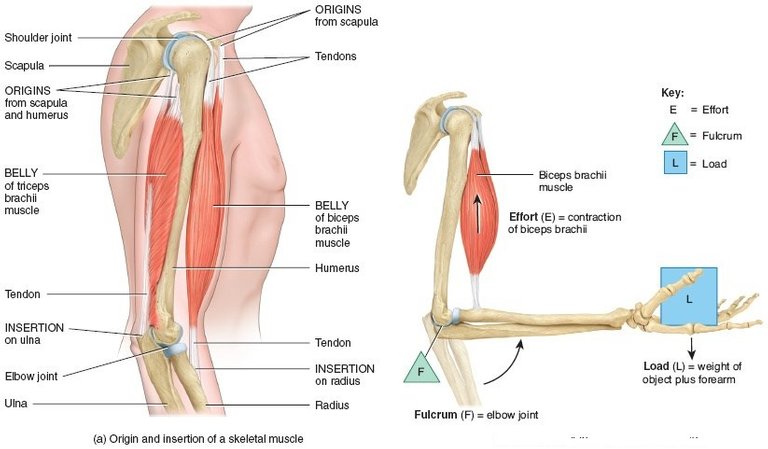Hello!
I saw the muscular system and how it works. Let's see how the muscular system responds to stimuli during training.

Image Credit: Higheredbcs
So about body adaptations to effort:
Adaptations to anaerobic training:
- Muscle hypertrophy - is the most visible sign of muscle adaptation, representing the cross sectional area of the muscle fibers.
Saroplasmic hypertrophy - sarcoplasm is the semifluid content that exists between muscle fibers. When hypertrophy occurs, sarcoplasm increases in quantity alongside non-contractile proteins. It increases the diameter of the muscles, but the fiber density is lower. It is specific bodybuilders. They will perform submachine weights moving, allowing for a series of 8-10 reps using slow moves. The increase in muscle volume is explained by the fiber hypertrophy process, produced by increasing the amount of miofibrils, actin and myosin, sarcoplasm, conjunctival tissue. Weight training leads to an increase in the number of crossbars, causing the fiber section to increase and increase the maximum contraction force.
Muscle hypertrophy:
- Transient hypertrophy - lasts for several hours, occurs after training, generates the feeling of pumping. It is due to swelling (fluid accumulation in the spaces interstitial and intercellular). This fluid comes from blood plasma.
- Chronic hypertrophy - occurs after long periods of strength training, is the result of structural changes in the muscular level by increasing the number (fiber hyperplasia) or by increasing the size of existing individual fibers (fiber hypertrophy). Synthesis of proteins - increased protein synthesis muscle is the one that causes hypertrophy of individual muscle fibers, after performing constant and intense resistive training. In muscle, protein synthesis and degradation are subject to continuous flow, variable depending on the body's demand.
In effort, protein synthesis decreases, degradation is exacerbated.
Exercise with weights activates protein catabolism and creates conditions conducive to the synthesis (anabolic phase) of contractile proteins during periods after effort. In the post-effort period, protein synthesis is accentuated, degradation decreases. Fiber hypertrophy - is a system of overcompensation, directly proportional and dependent on training, its intensity and volume.
Overcompensation is a protective mechanism that we encounter in all body systems. Specifically, when traumatizing muscle fibers (as a result of heavy weight exercises) triggers repair mechanisms that restore initial structure and bring substantial improvements. In this case, muscle hypertrophy is a protective mechanism, the body being prepared to face future demands induced by a new strength training.
Overcompensation requires optimal energy and protein demand, and a recovery period between 24-72 hours training. To induce muscle hypertrophy, it is necessary to produce microtraumatism, which only affects a small part of muscle fibers. They cause muscle fever. Microtraumatism occurs especially during the negative phase of an exercise (eccentric phase), when we lower the weight.
The destruction of the cell membrane opens microscopic holes through which various substances that influence protein synthesis in the extracellular space cells not affected by microtraumatism.
The intense effort also contributes to the accumulation in cells of metabolic products that stimulate the secretion of hormones.
A known metabolite is lactic acid, whose accumulation in muscle in large amounts leads to stimulation of testosterone secretion. It also increases secretion growth hormone (GH), insulin.
Stay fit and healthy!
Have a nice day :)
If you liked it Upvote and Follow me!@viorel